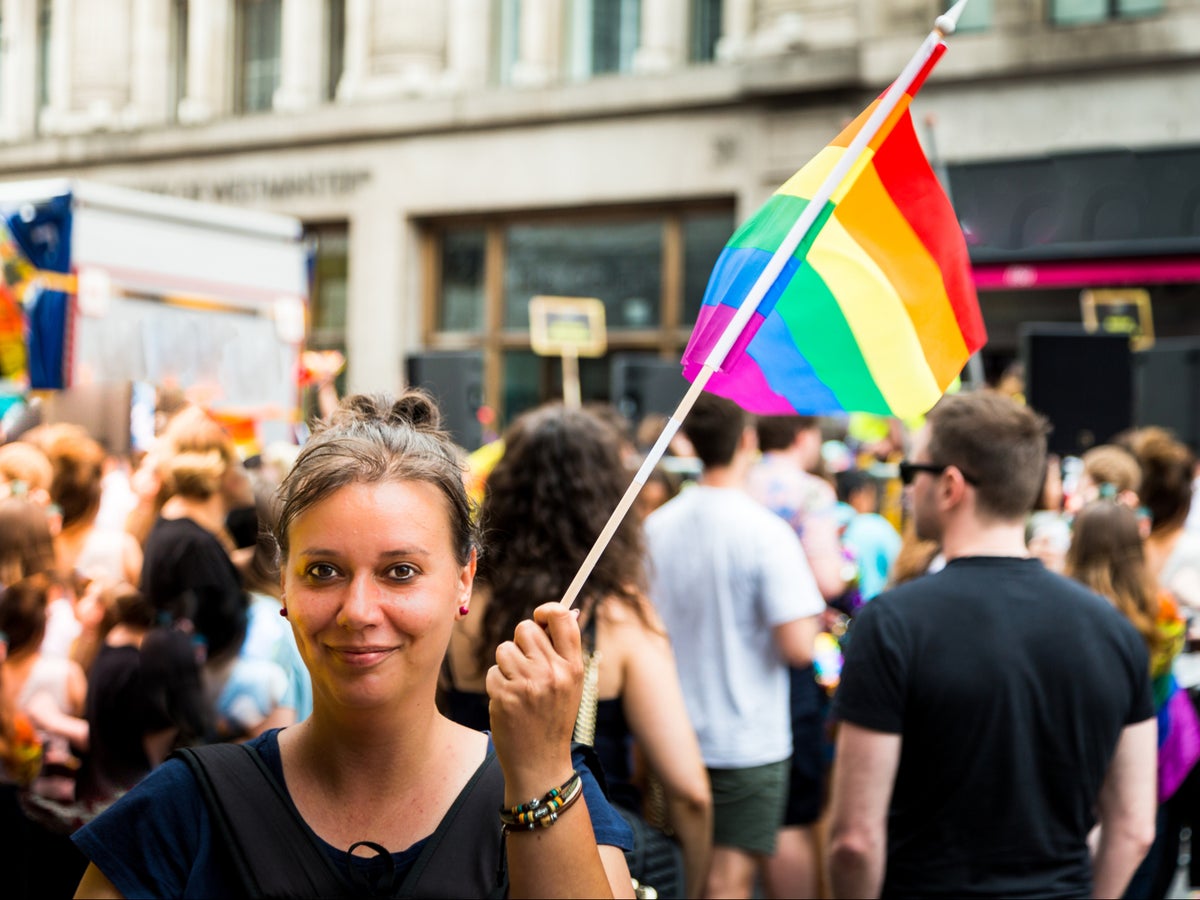
Pride in London will return to England’s capital in July, after a two-year hiatus during the pandemic.
The annual festival, called the Pride Parade, is being held on Saturday 2 July, with organisers recieving more than 40,000 applications from members of the public and community groups to take part.
Earlier this month, Pride in London announced the theme of this year’s celebration, #AllOurPride.
In collaboration with WPP, an organisation that campaigns for LGBT+ inclusion in the workplace, #AllOurPride will recognise how key historic events have improved diversity across the UK in the past 50 years.
Triumphs which are being celebrated include a recent change to the blood donation policy, now allowing gay and bisexual men to donate blood without subjecting them to a waiting period, and the 2013 Marriage Bill, which legalised same sex marriage.
As Pride in London returns, here’s a look back at the first parade and how the event has evolved over the years.
How did Pride in London begin?
The first official Gay Pride Rally in London was held in 1972.
The event was launched in response to the Stonewall riots, which began in the early hours of 28 June 1969 when a police raid took place at Stonewall Inn, a gay bar in Greenwich Village, New York.
Following the police raid, for three nights members of the LGBT+ community fought back against police brutality, in a series of riots that played a key role within the wider gay liberation movement.
Three years after the Stonewall uprising, London Pride was born, taking place on Saturday 1 July 1972.
Approximately 2,000 people took part, a fraction of the estimated 1.5 million who attended last year’s event.
However, while the first official Pride rally was held in 1972, the first Pride marches actually took place two years prior in November 1970, when around 150 people marched through Highbury Fields in North London.
How has it progressed over the years?
While the Stonewall riots that inspired Pride in London took place in New York, members of the LGBT+ community in London also faced discriminatory behaviour and violence.
During Gay Pride Week in 1978, a leaflet was distributed that referenced “increasing attacks on gay people over the past year”, the Museum of London states.
In the ninth year of London’s Pride march, the rally was relocated to Huddersfield in West Yorkshire in support of the gay community in the area, who claimed that they were being harassed by West Yorkshire Police.
A higher number of people took part in the rally in 1988 in response to Section 28, a governmental act established in England, Scotland and Wales that stated that a local authority “shall not intentionally promote homosexuality or publish material with the intention of promoting homosexuality” or “promote the teaching in any maintained school of the acceptability of homosexuality as a pretended family relationship”.
The act was repealed in Scotland in 2000 and in the remainder of the UK in 2003.
More than a decade after the Gay Pride Rally first took place, in 1983 it was renamed Lesbian and Gay Pride, before being renamed again in 1996 to Lesbian, Gay, Bisexual and Transgender Pride.
From 2004 up until 2012, the charity Pride London organised all the annual Pride celebrations in the English capital.
Pride in London has since been run by London LGBT+ Community Pride, a community interest company.
With hundreds of thousands of people attending the parade every year, Pride in London is the only annual event for which London’s Oxford Street is closed.
How did the most recent Pride in London celebrations unfold?
2019 was a particularly significant year for Pride Month, marking the 50th anniversary of the Stonewall riots.
Pride in London featured 30,000 marchers from the LGBT+ community, including 600 groups in the parade, a marked increase from the year before when 500 groups participated in the spectacle.
Performers who made appearance on Pride in London’s many stages included Broadway legend Billy Porter and RuPaul’s Drag Race stars Willam, Scarlet Envy and Soju.
The event was made more accessible with the inclusion of viewing platforms, vantage points for people with limited mobility, British Sign Language interpreters and captioning.
The crowds were awash with rainbow-patterned outfits, banners and flags, in a spectacle that will hopefully be resumed in all its extravagance in 2021.
The Independent is the official publishing partner of Pride in London 2022.







